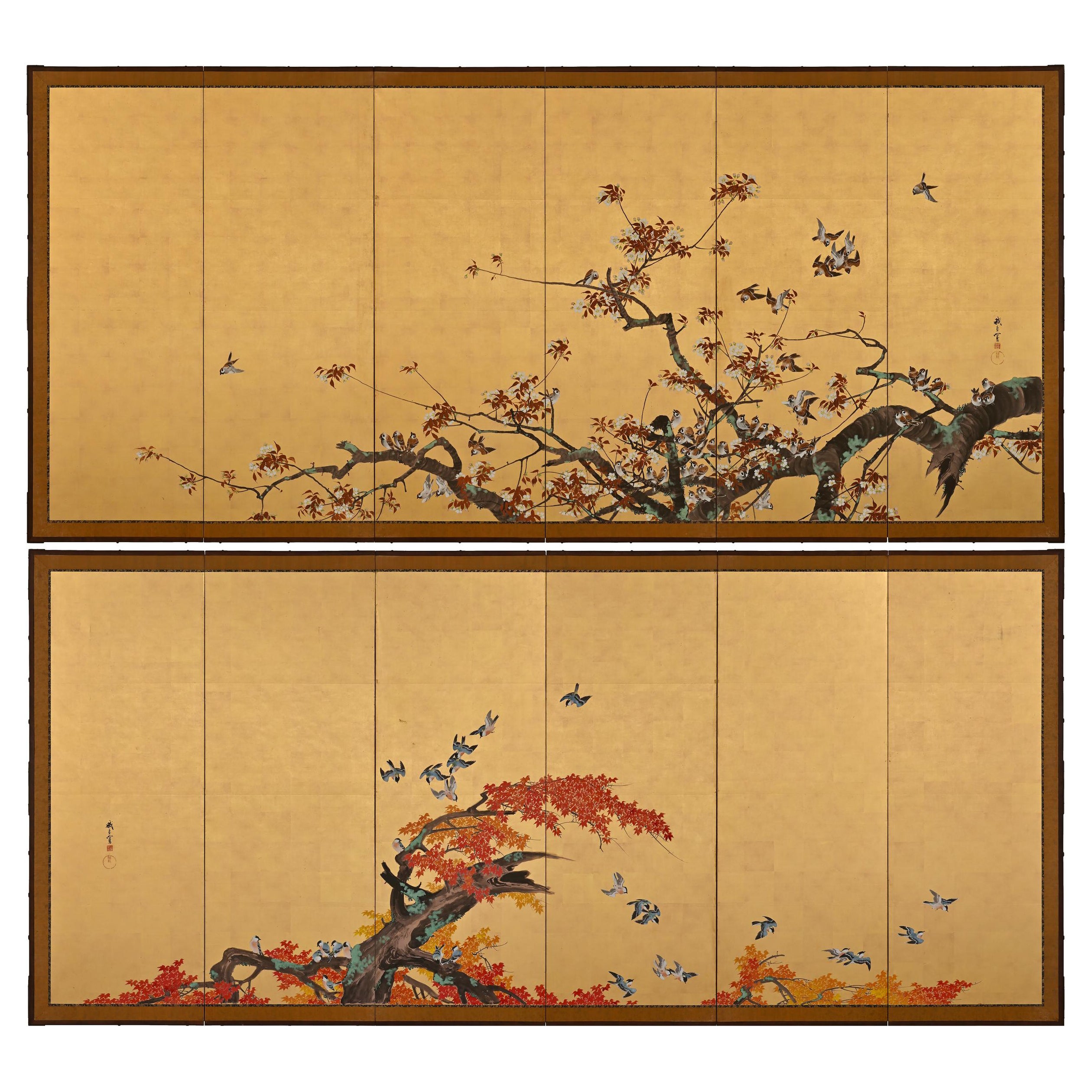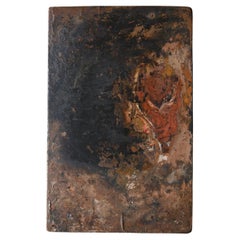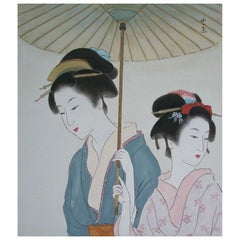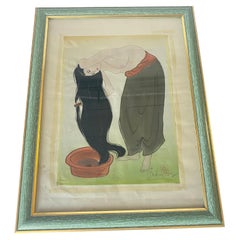Questions & Answers
Our trusted network of 1stDibs sellers answer common questions
How can you tell if art is Japanese or Chinese?
1 Answer

To tell if art is Japanese or Chinese, study the piece's characteristics. With paintings, Chinese artists often use more color and tend to fill their entire canvases, while Japanese artists often include more negative space and choose subtler colors. There are also differences between the brushstrokes typical of traditional Chinese and Japanese art. In Japanese paintings, brushstrokes are often short and sharp. On the other hand, Chinese paintings often display longer, more fluid brushstrokes. Learning about the defining features of various art forms and periods and looking at examples of pieces made by Japanese and Chinese artists can help you learn to spot subtle differences. Explore a diverse assortment of Japanese and Chinese art on 1stDibs.
1stDibs ExpertOctober 15, 2024
Related Questions
- How can I tell the difference between Chinese and Japanese cloisonné?1 Answer
- How can I tell if my Japanese pottery is antique?1 Answer
- How can you tell if Japanese pearls are real?1 Answer
- How can I tell if my Chinese furniture is antique?1 Answer
- Is jade Japanese or Chinese?1 Answer
Shop for Japanese Paintings on 1stDibs
Wooden work board of an old Japanese lacquerware craftsman/wall hanging object
Located in Sammu-shi, Chiba
This is a workbench used by a lacquerware craftsman around the Showa era. Originally, it was a workbench with drawers, but the drawer portion has been lost, leaving only the top boar...
Category
20th Century Japanese Showa Paintings
Materials
Wood
Vintage Japanese Watercolor Painting of Two Geisha, Signed, Late 20th Century
Located in Chatham, ON
Vintage watercolor painting of two Geisha under an umbrella - watercolor over graphite with gold gilt border - signed upper right (unidentified artist/maker...
Category
Late 20th Century Japanese Japonisme Paintings and Screens
Materials
Paint, Paper
$1,050 Sale Price
30% Off
Japonaise Painting in a Wood Frame, Representing a Woman, Japan, XX Century
Located in Auribeau sur Siagne, FR
This is an genuine painting, of a woman, with green and orange colors. It has been made in Japan, during the XX Century. It is signed.
Category
20th Century Japanese Chinese Export Paintings
Materials
Wood, Paint
$254 Sale Price
20% Off
Early 19th Century Japanese Screen. Cherry Blossom & Pheasants by Mori Tetsuzan
Located in Kyoto, JP
Mori Tetsuzan (1775-1841)
Pheasants and Cherry Blossoms
Two-fold Japanese screen. Ink, color, gofun, gold and silver on paper.
A two-fold Japanese bir...
Category
Antique Early 19th Century Japanese Edo Paintings and Screens
Materials
Gold Leaf
Early 20th Century Japanese Screen Pair - Ink Pine Trees on Gold
Located in Kyoto, JP
Imao Keisho (1902-1993)
Pine Trees
Early 20th Century, Circa 1930
Pair of six-panel Japanese screens. Ink on silk and gold leaf.
Dimensions: Each screen H. 67.5” x 148” (172 cm x 376 cm)
A pair of monumental six-panel Japanese pine screens by the renowned Nihonga artist Imao Keisho. Here Keisho entirely removed the background and brought the pine trees to the surface of the painting. This simplification of the elements makes the scene exceptionally direct and compelling and injects a very modern...
Category
Early 20th Century Japanese Showa Paintings and Screens
Materials
Gold Leaf
19th Century Japanese Shunga Hand-Scroll, Katsukawa School
Located in Kyoto, JP
Shunga
Unknown artist
Meiji era, circa 1880
Hand-scroll mounted with 12 paintings
Ink, pigment and gofun on silk
Dimensions:
Each image measures H. 23.2 cm x W. 34.4 cm (9.15” x 13.5”)
The hand-scroll measures H. 28 cm x W. 540 cm (11” x 212”)
A set of 12 late 19th century Japanese Shunga paintings mounted as a hand-scroll. Two of the leaves bear the signature and seal ‘Setsuzan’, although we are unable to confirm the identity of the artist using this art name. 6 of the 12 images are taken almost directly from Katsukawa Shuncho’s late 18th century woodblock series, ‘Erotic Pictures...
Category
Antique Late 19th Century Japanese Meiji Paintings and Screens
Materials
Silk


